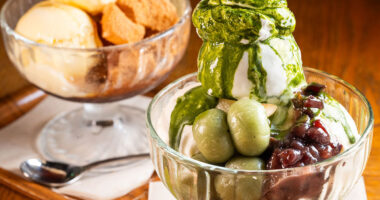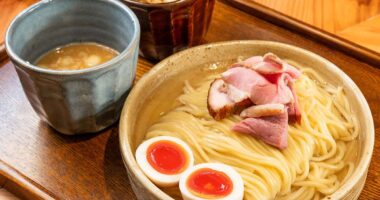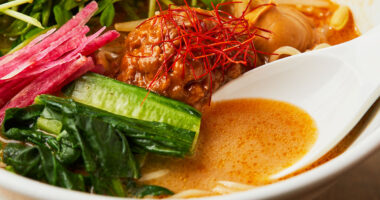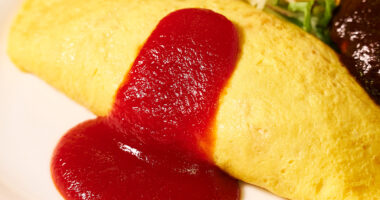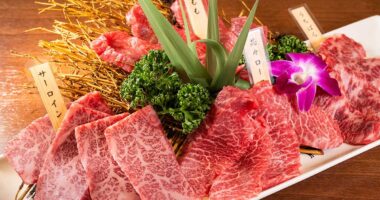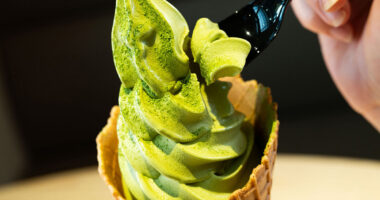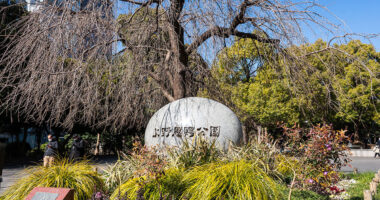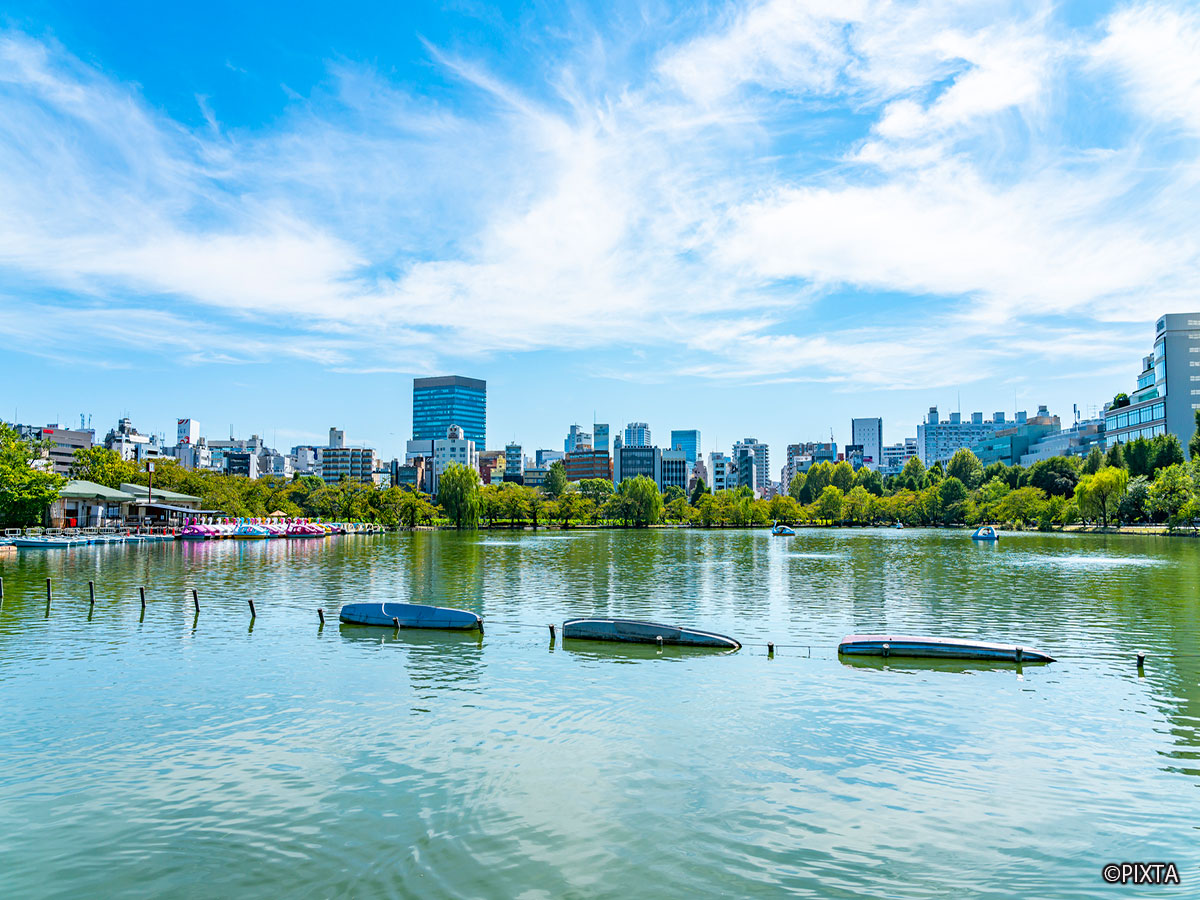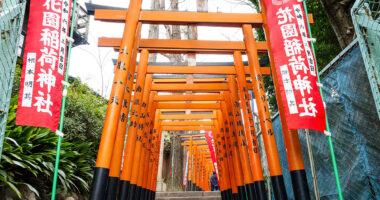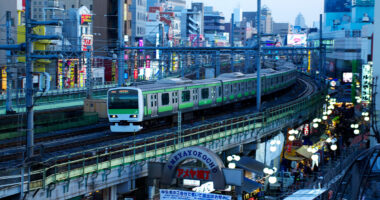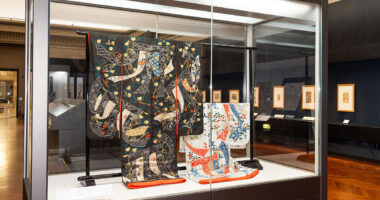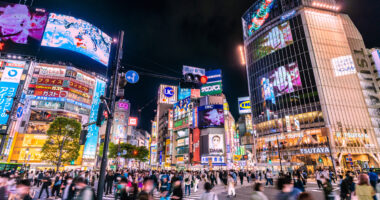Okinawa soba is a beloved noodle dish that represents Okinawan cuisine, commonly eaten throughout the prefecture. With a unique flavor all its own, it’s distinct from both Japanese soba and ramen.
“Miyara Seimen” is a rare Okinawa soba specialty shop in Tokyo, offering not only traditional Okinawa soba but also the hard-to-find Yaeyama soba, a regional variant seldom seen outside of Okinawa.
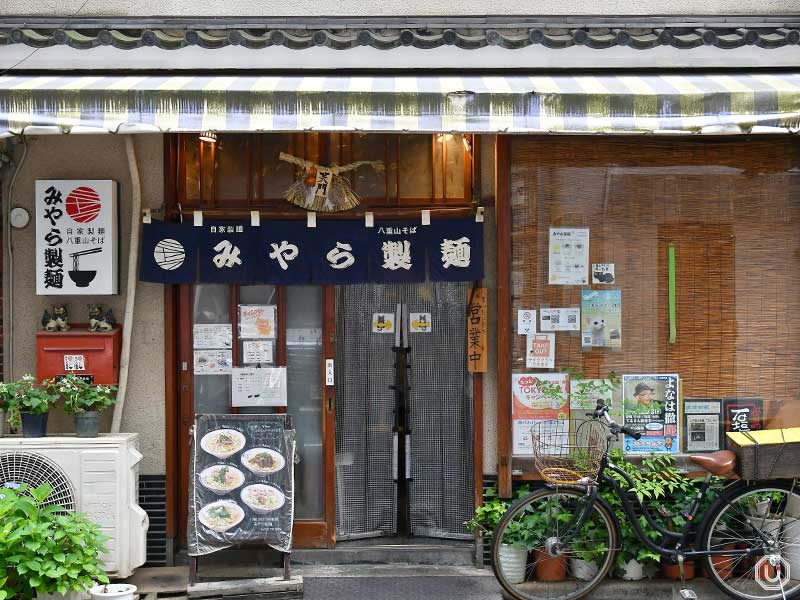
Located just a 2-minute walk from Yushima Station and close to the Ueno area, Miyara Seimen is marked by its traditional noren curtain and signboard. The nostalgic exterior sets the tone before you even step inside.
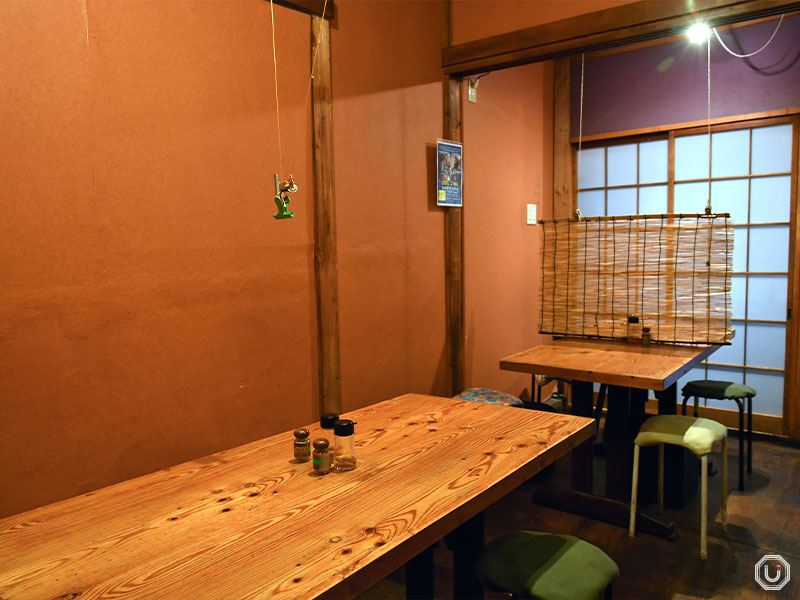
Purchase a meal ticket at the vending machine by the entrance, then hand it to the staff after seating yourself. The shop has a total of 12 seats, split between counter and table seating.
Because of the shop’s compact size, it’s customary to give up your seat after finishing your meal so others can enjoy their turn.
Savor traditional Okinawa soba and homemade noodles!
While Okinawan restaurants have become more common in Tokyo, restaurants where you can eat Okinawa soba with house-made noodles are still rare.
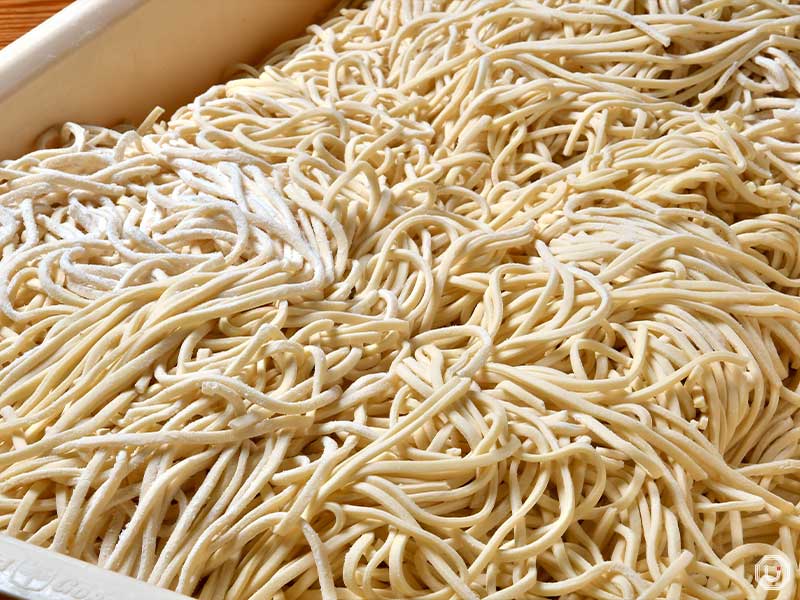
As the name implies, Miyara Seimen (in Japanese, “Seimen” means noodle maker) makes noodles in-house. Owner Miyara hails from Ishigaki Island and began making his own noodles after struggling to source Okinawa soba noodles outside of the prefecture.
The noodles are made fresh daily, just enough for that day’s servings, so customers can enjoy them at peak freshness.

After the noodles are boiled to order, they go through a process called aburadome before being placed in the bowl. Aburadome is the process of coating boiled noodles with oil, which is one of the characteristics of soba from Okinawa.
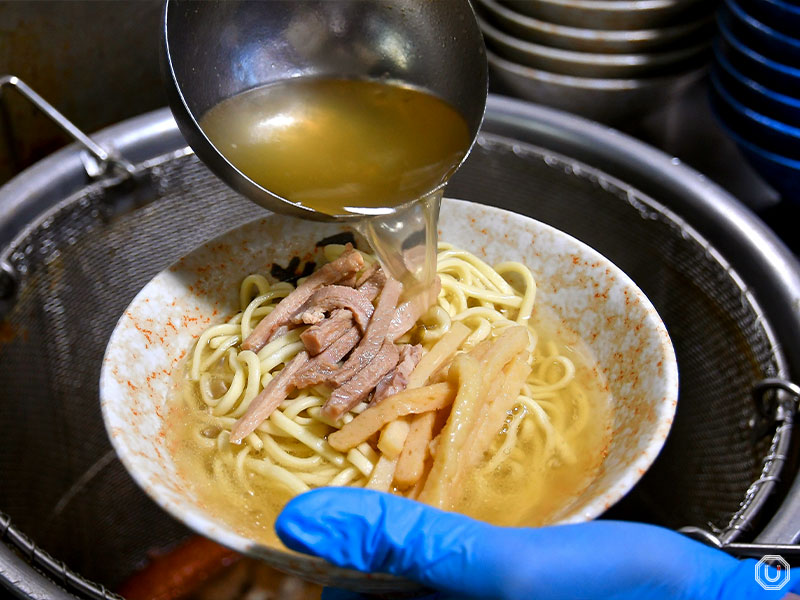
Pictured: the cooking process of Yaeyama Soba
Recently, many restaurants have started serving unique variations of Okinawan soba. However, standard Okinawan soba soup is made with a clear pork bone broth base, combined with bonito stock and a hint of chicken stock for flavor.
At Miyara Seimen, the flavor also stays true to traditional Okinawa soba—elegant and light in taste.
A wide variety of Okinawa soba styles
Miyara Seimen offers a rich variety of Okinawa soba toppings.
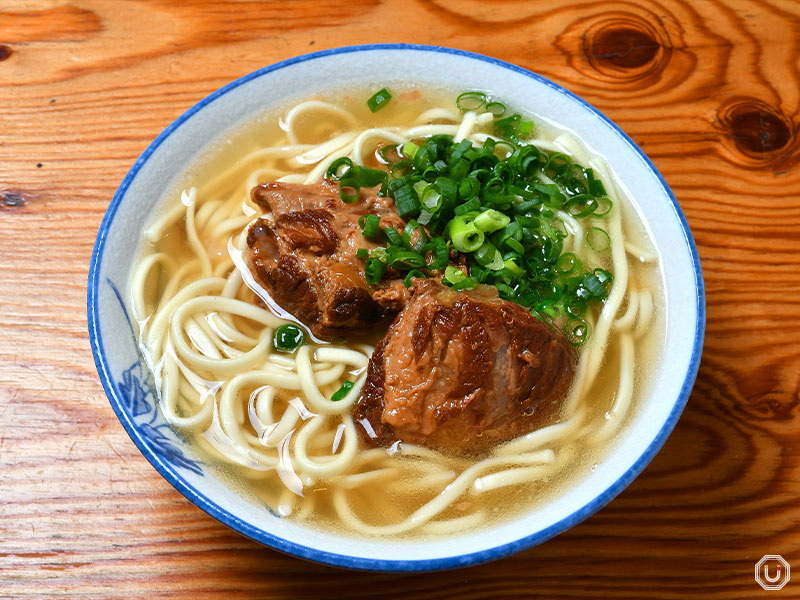
“ソーキそば,” Sōki Soba 800 JPY (tax included)
“Sōki Soba,” topped with sōki (pork spare ribs in Okinawan dialect), is Miyara Seimen’s most popular dish.
Soki is one of the most common toppings for Okinawa soba and often what people think of when they hear the dish’s name.

The noodles that Owner Miyara perfected through trial and error with flour and water ratios have a unique firm texture that differs from both udon and ramen.
The gently-flavored soup coats the noodles, creating a simple yet profound taste.
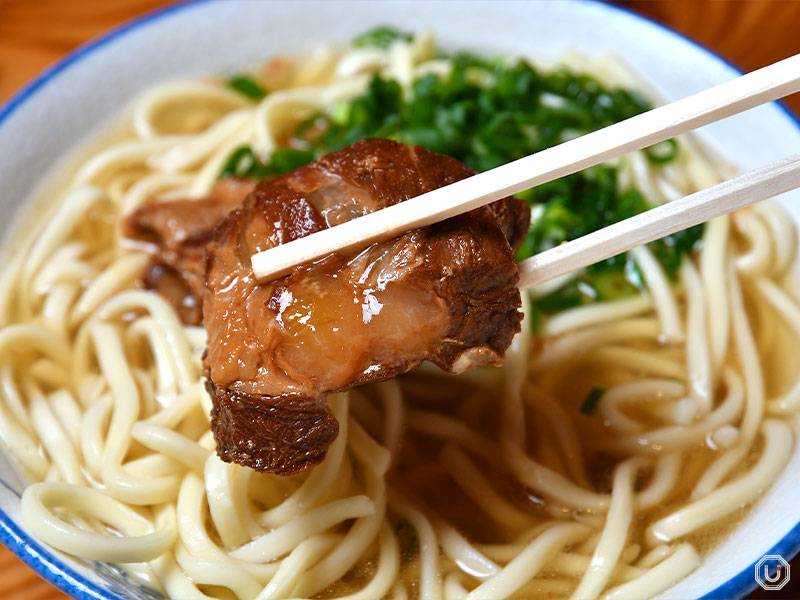
Miyara Seimen’s soki soba is topped with sweetly seasoned, tender-braised soki. The soki, soft even to the cartilage, adds richness and a savory accent when combined with the light soup.
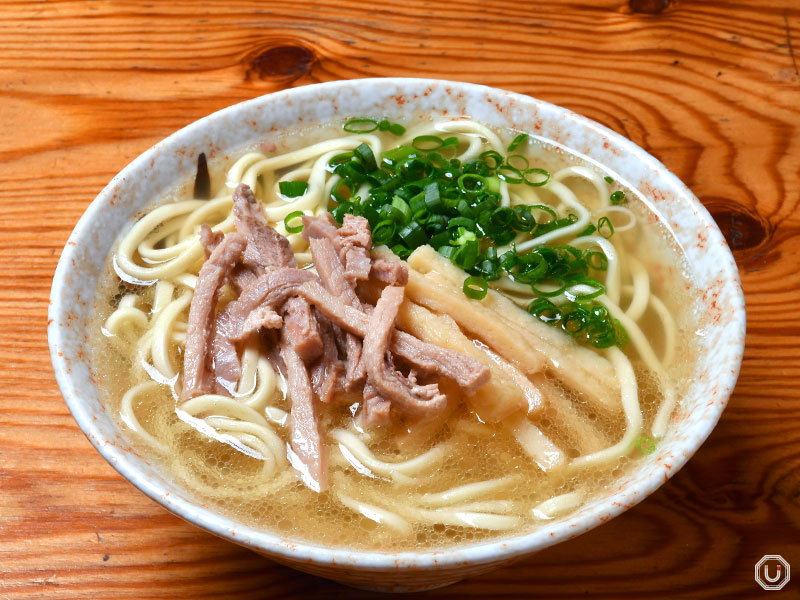
“八重山そば,” Yaeyama Soba 650 JPY (tax included)
Okinawa Prefecture consists of many islands. While Okinawa soba is widely eaten throughout Okinawa Prefecture, the ingredients and flavors are said to vary by region and island.
The “Yaeyama Soba” here is a recreation of the style found on Ishigaki Island, Owner Miyara’s hometown.

The soup and noodles are the same as soki soba, but the toppings differ. Yaeyama soba is topped with “Yaeyama kamaboko” (a fish cake and specialty of Ishigaki Island) and thin strips of pork.
Unlike the sweet and savory flavor of soki, Yaeyama soba lets the flavor of the broth and noodles take center stage.
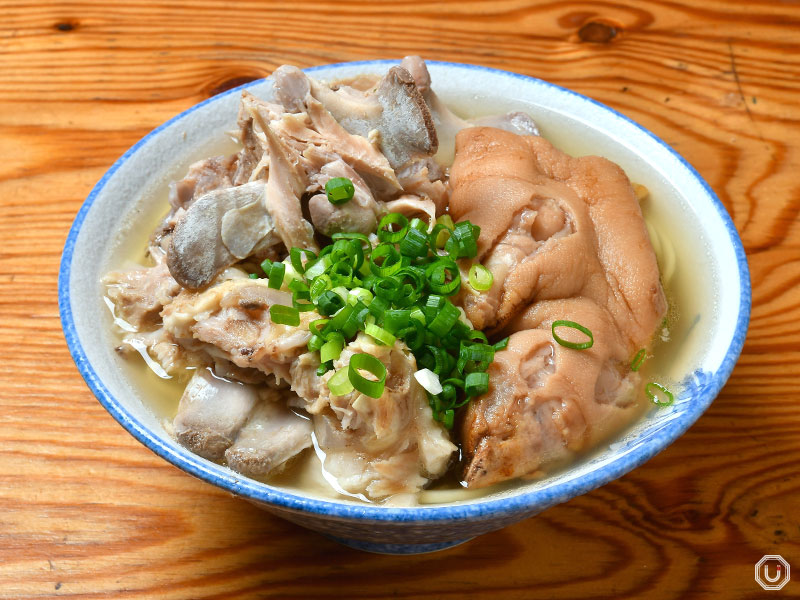
“てびちそば,” Tebichi Soba 900 JPY (tax included)
In Okinawa, where pork consumption is high, parts like pig’s feet are commonly eaten in addition to regular cuts like loin and belly.
“Tebichi Soba” is a dish where you can enjoy tender-braised pig’s feet (called tebichi in Okinawa) along with the meaty pork bones used to make the soup.
Although its appearance might be surprising at first, one bite will likely change your mind!
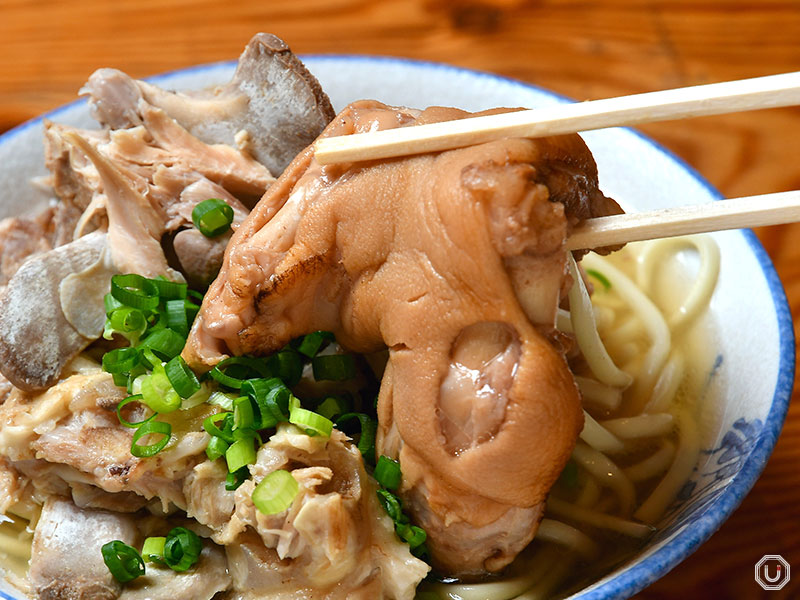
The slowly braised tebichi has a melt-in-your-mouth, jelly-like collagen texture.
Combining the rich flavor of the tebichi with a light, clear broth creates a distinct taste that sets it apart from other dishes.
There’s still plenty of meat left around the pork bones too, so be sure to enjoy every last bite.
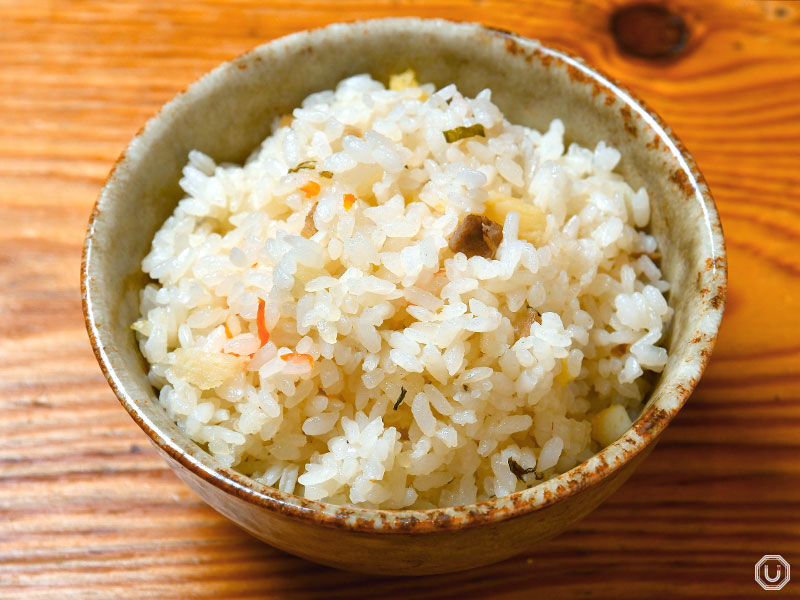
“じゅーしー,” Jūshī 200 JPY (tax included) *available as a set with noodles at lunchtime
During lunch hours, you can add a side of jūshī (Okinawan seasoned rice) and pickles to your meal for an extra 200 JPY.
Cooked in Okinawa soba broth, it has a light yet deeply flavorful taste.
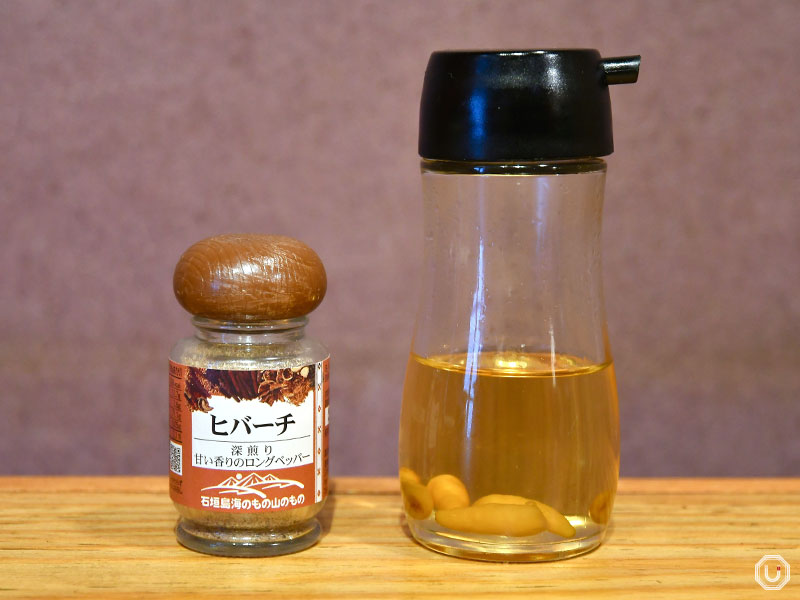
(left) “ヒバーチ,” hibāchi (right) “コーレーグース,” kōrēgūsu
The hibāchi and kōrēgūsu placed on the table are seasonings unique to Okinawa. Add them to your Okinawan soba as desired.
Koregusu, made by soaking chili peppers in awamori (Okinawan liquor), adds a spicy kick.
Hibachi is powdered fruit from a native plant of Ishigaki Island, also known as “island pepper.” Its peppery kick and spicy, cinnamon-like aroma adds complexity to your bowl.
Try adding them halfway through your meal to enjoy a change in flavor.
Evening-only sides you don’t want to miss
From 5:00 PM onwards, the restaurant switches to dinnertime, with an expanded menu including onigiri and single dishes.
One standout from the dinnertime menu is the “Pō-tama.”
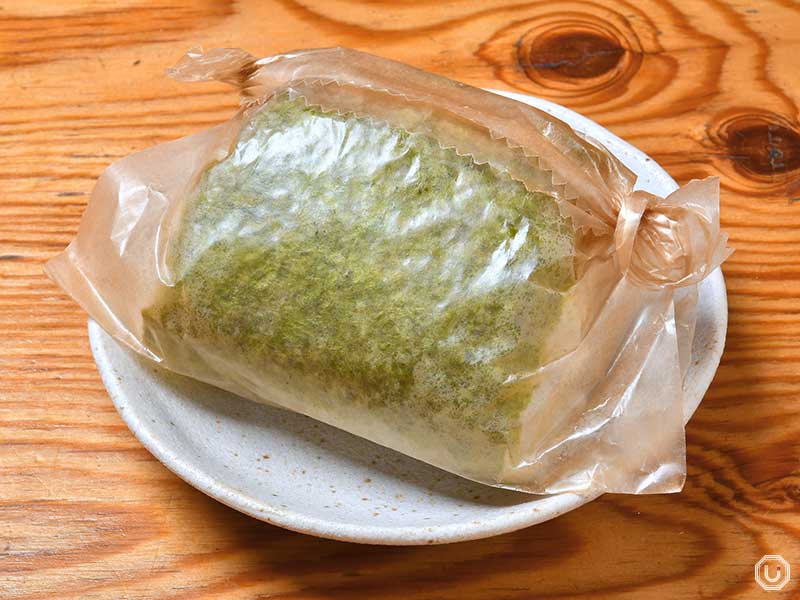
“ポーたま,” Pō-tama 380 JPY (tax included)
Short for “pork tamago,” (pork and egg) this hearty rice ball contains grilled spam and a fried egg. Spam consumption is highest in Okinawa, where it became a staple during the postwar U.S. occupation.
Toasty, savory, and filling, this Okinawan soul food is a must-try.
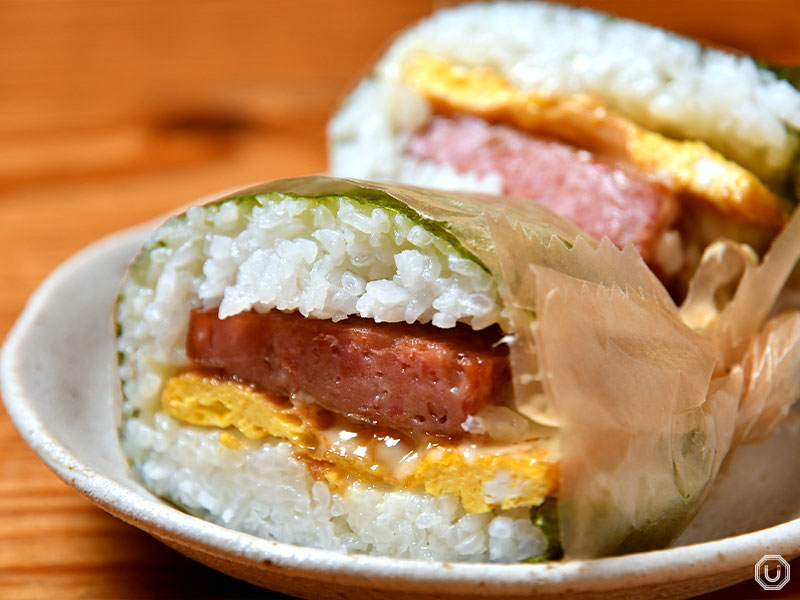
While modern Okinawa soba shops have begun experimenting with bolder, richer flavors, Miyara Seimen stays true to tradition.
Owner Miyara continues his shop with the belief that, “There should still be places that preserve the standard, old-school Okinawa soba.”
At Miyara Seimen, experience a quiet bowl that delivers the soul and flavor of Okinawa in its most authentic form.
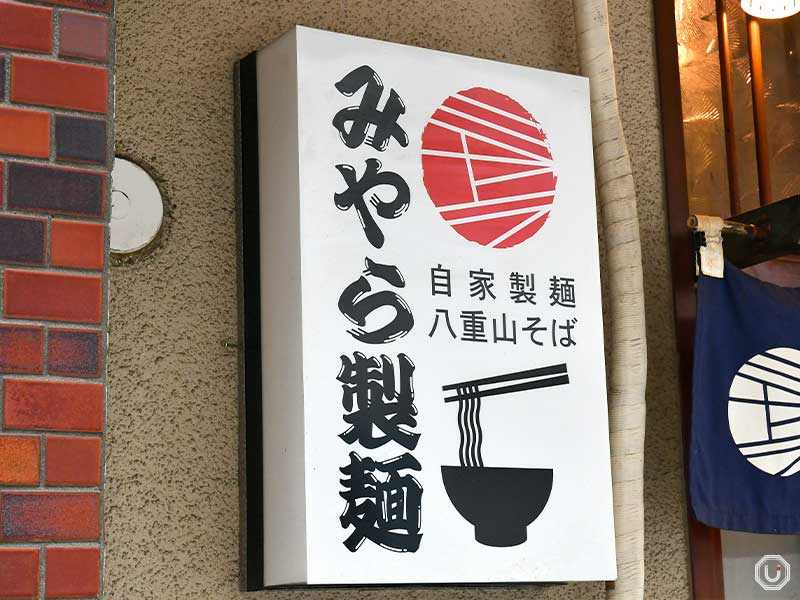
Information
| Store name | みやら製麺 Miyara seimen |
|---|---|
| Address | 1-2-8 Ueno, Taito-ku, Tokyo
|
| Access |
Yushima Station 1-minute walk from Exit 5
Ueno-hirokoji Station 5-minute walk from Exit A4 Ueno-okachimachi Station 5-minute walk from Exit A4 Okachimachi Station 6-minute walk from Okachimachi Station South Exit Okachimachi Station 7-minute walk from Exit 2 |
| Phone number | 03-5577-6622 |
| Reservations | Not accepted |
| Payment |
|
| Service charge/Table charge | None |
| Hours | Mon-Fri. 11:30-15:00, 17:00-20:00 Sat. 11:30-15:00 |
| Closed | Sunday and national holidays |
| Seating | 12 seats 4 counter seats, 8 table seats |
| Smoking | All seats are non-smoking |
| Official website | https://x.com/miyaraseimen |
| Other information |
|
※Menu contents, prices, store information, etc. are current as of June 2025.

